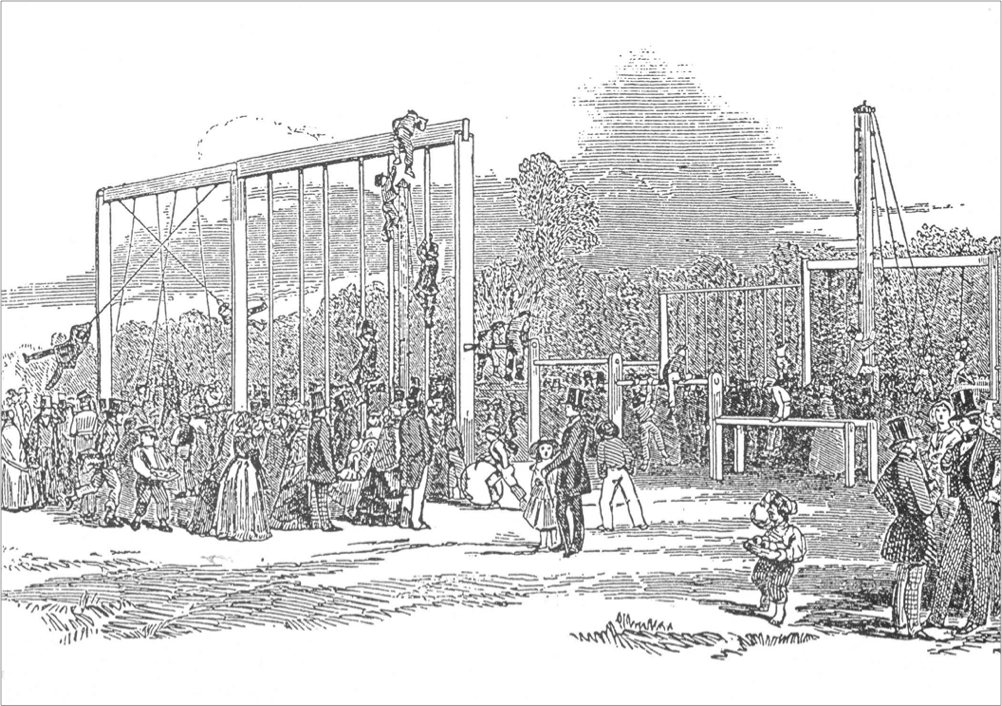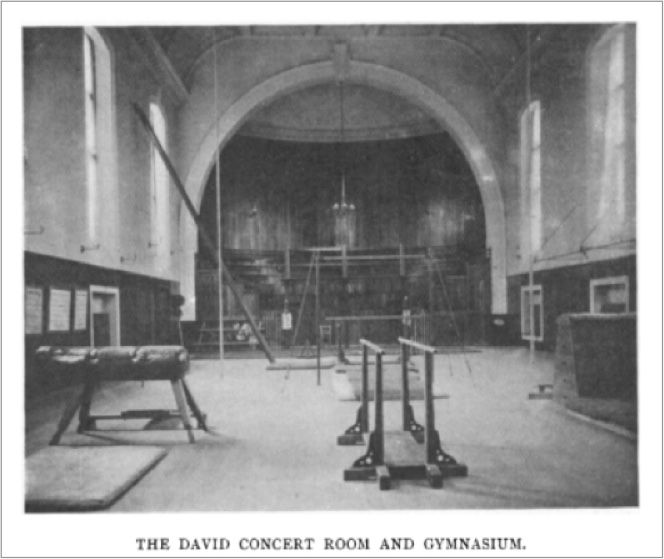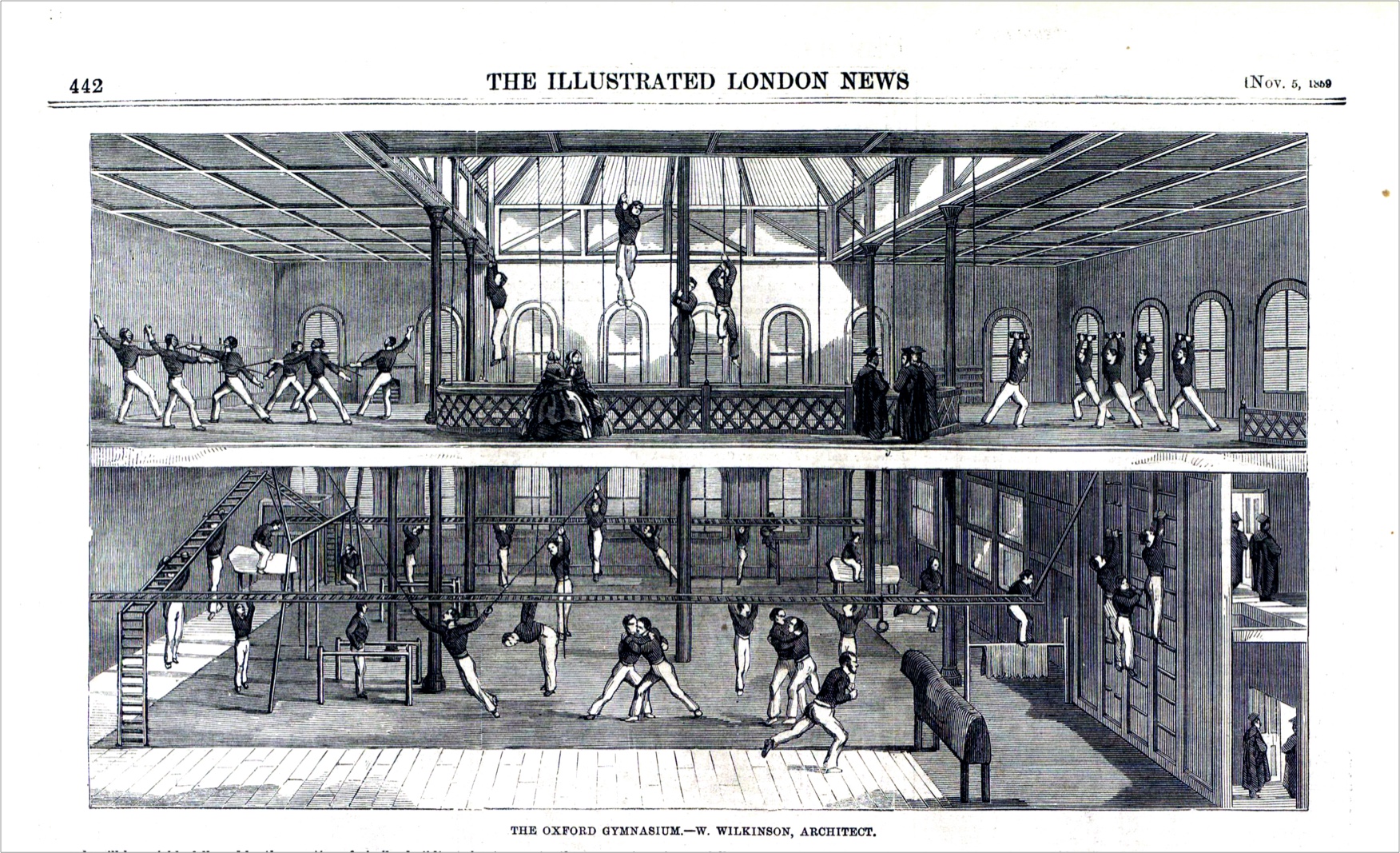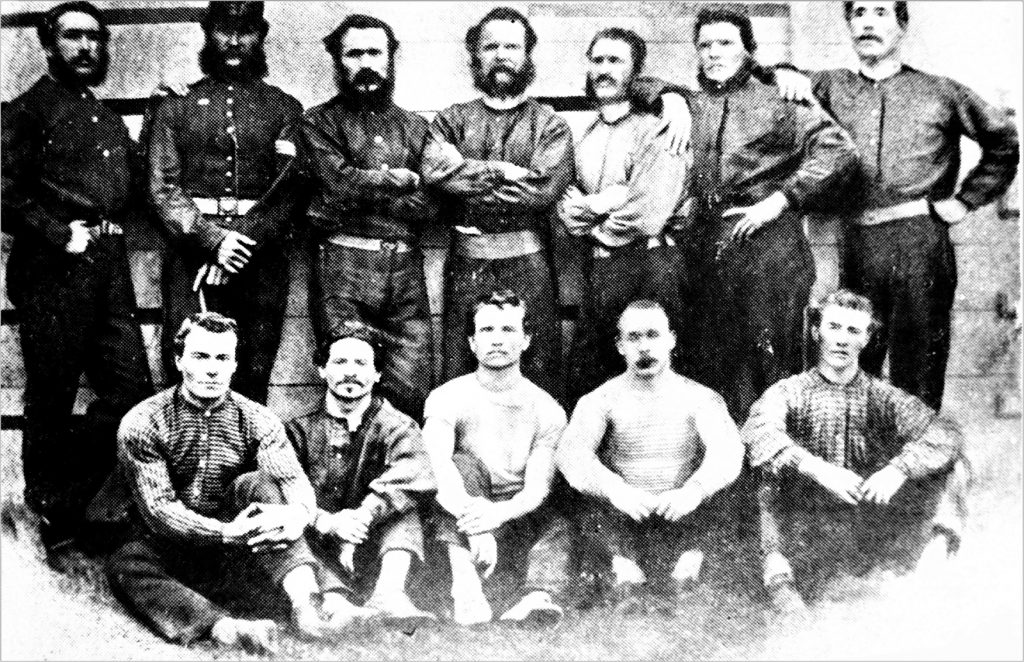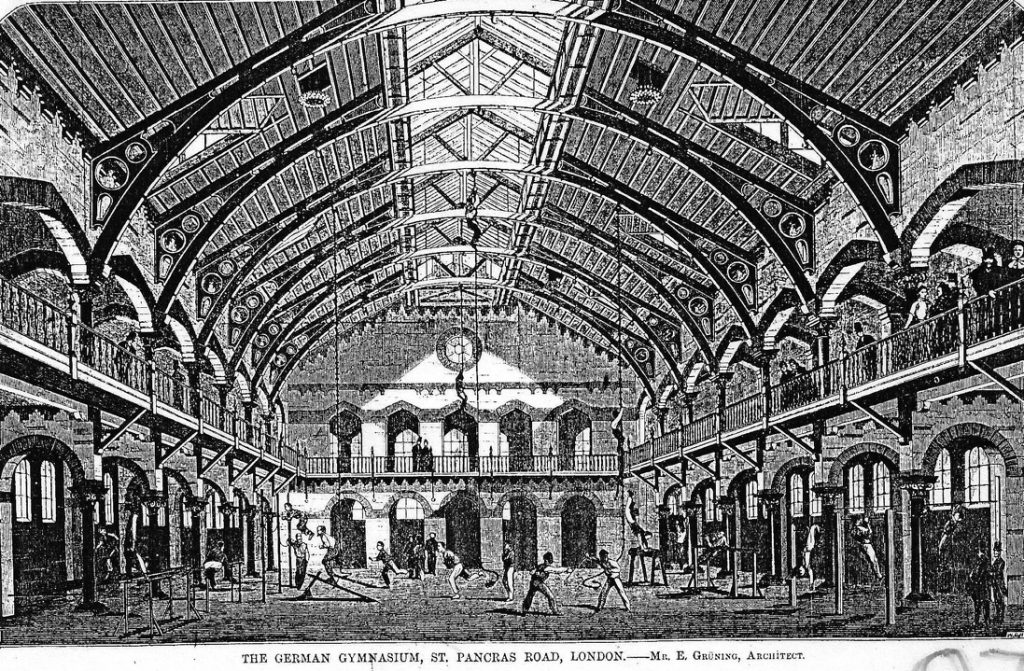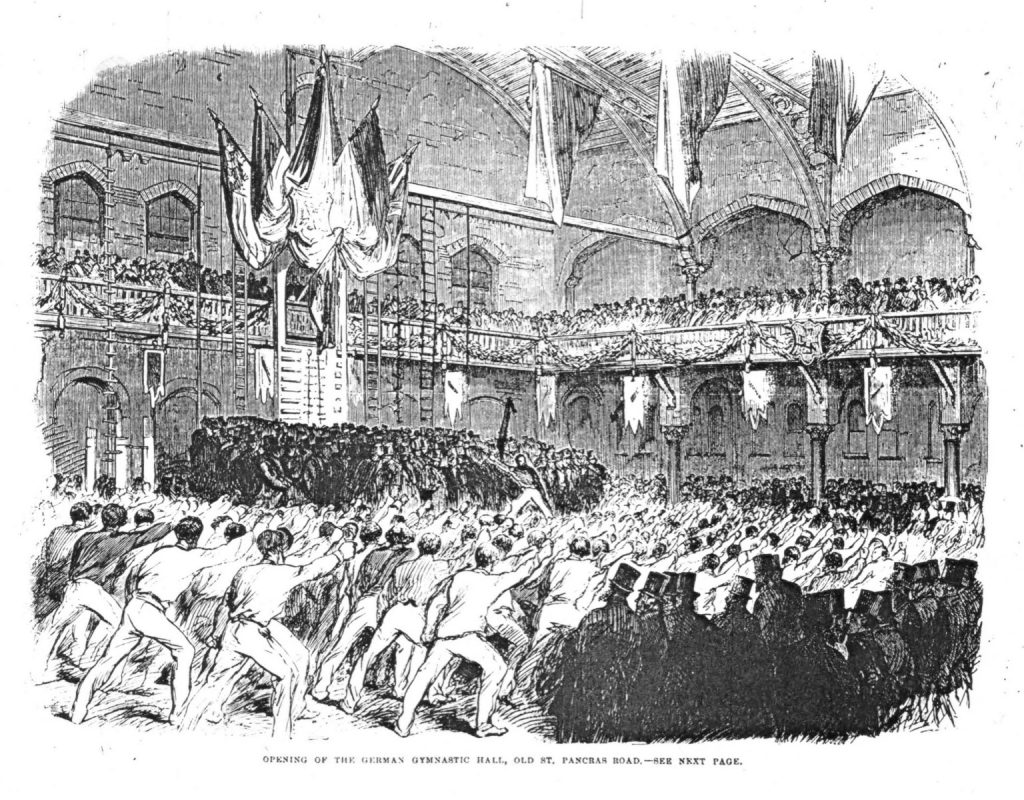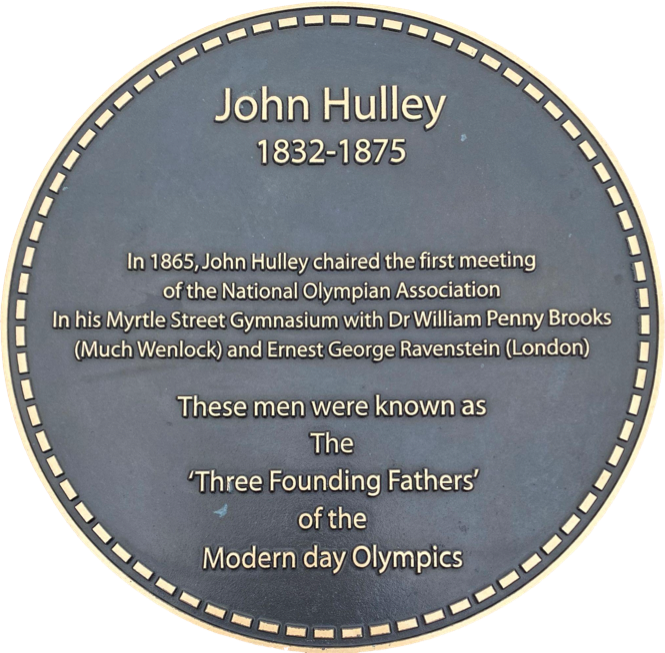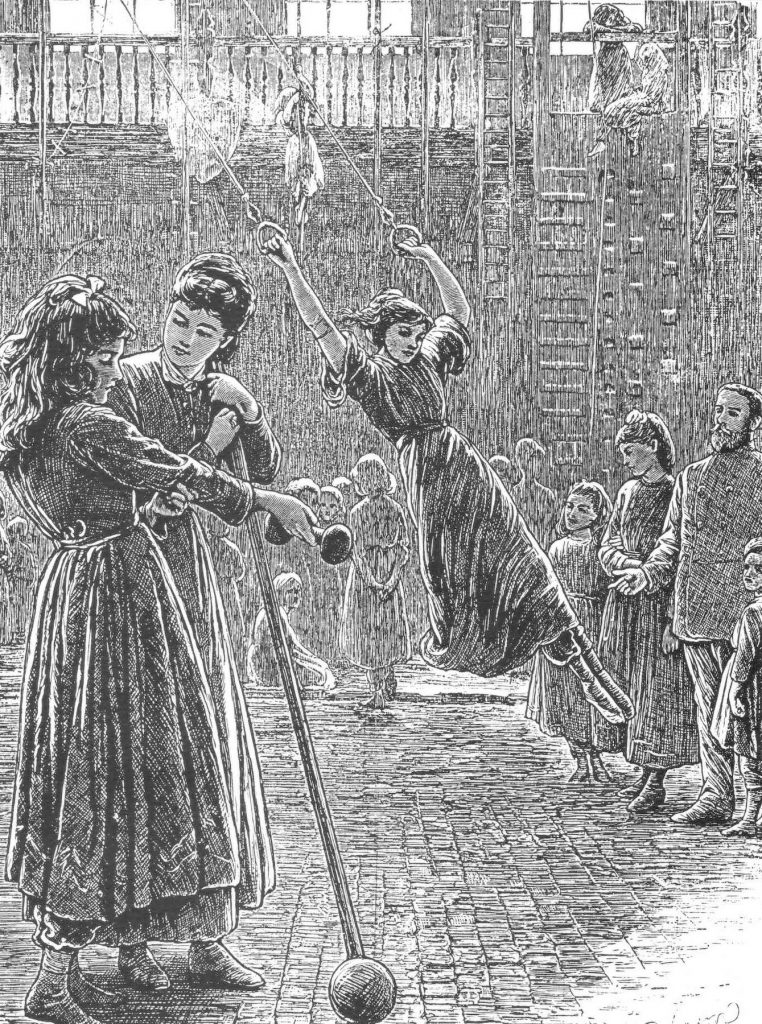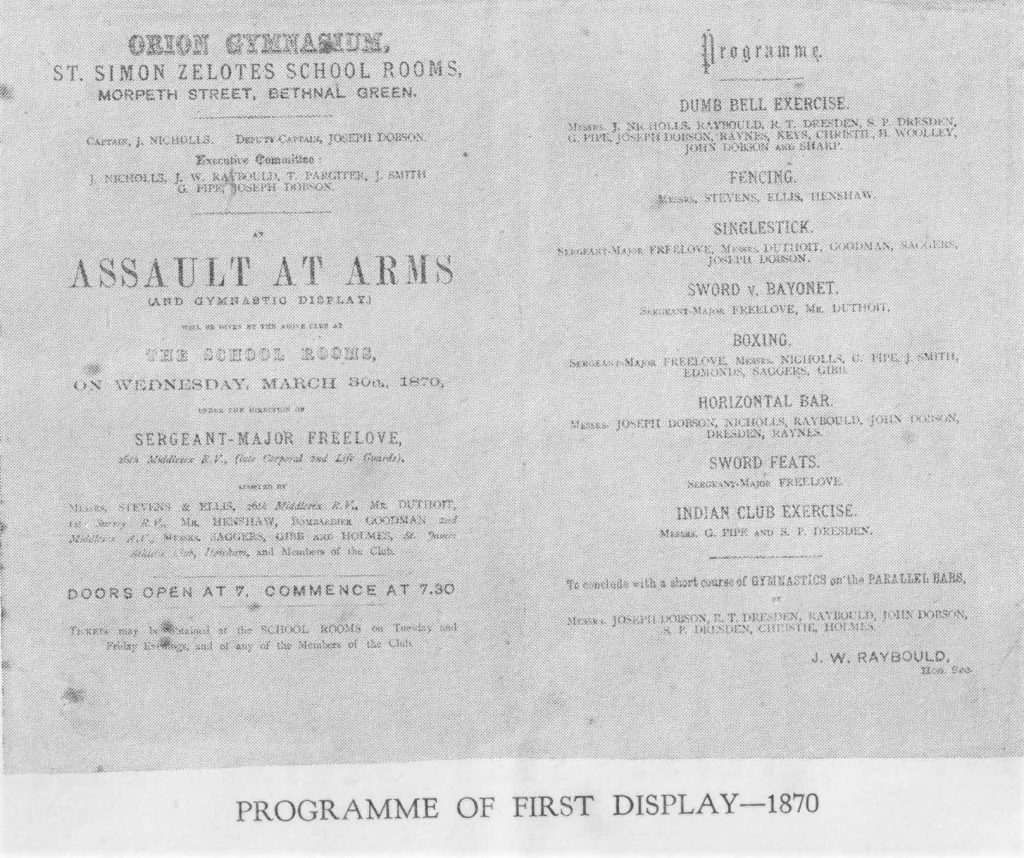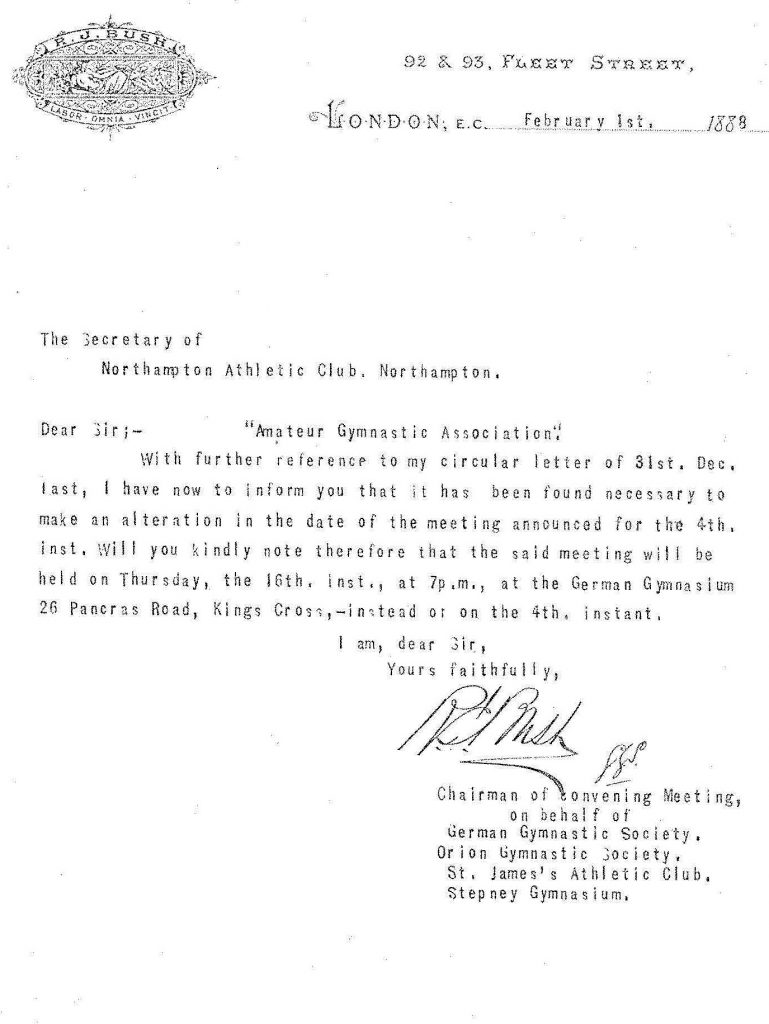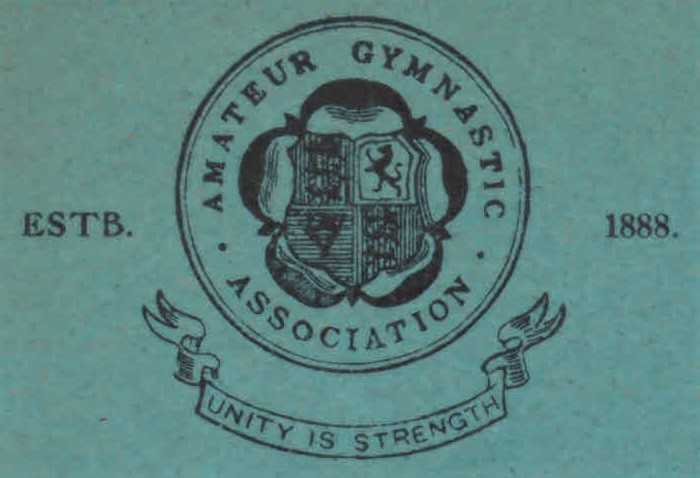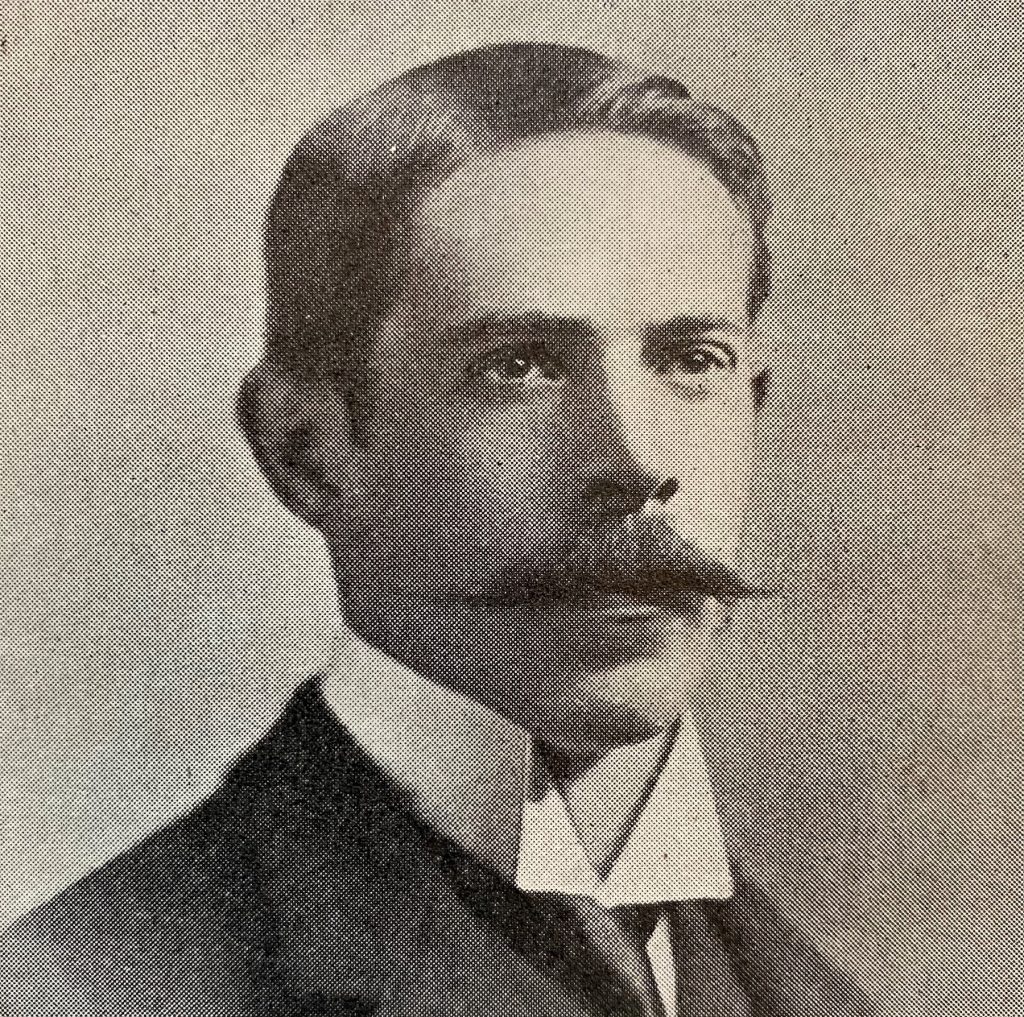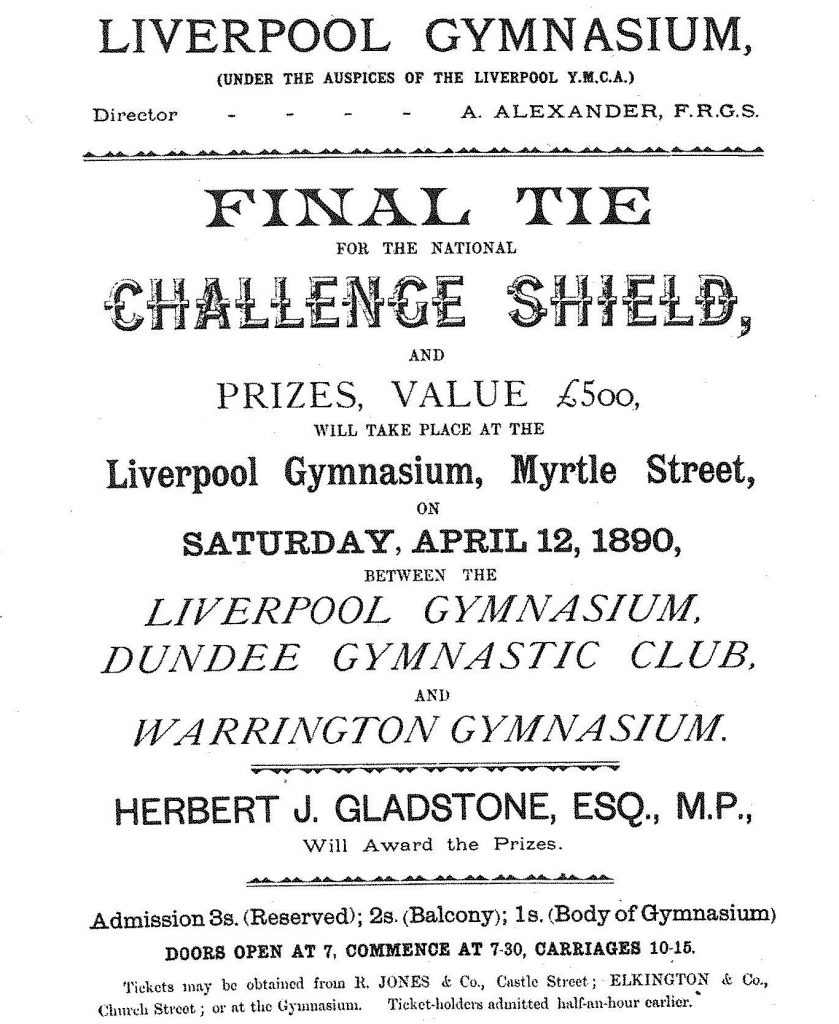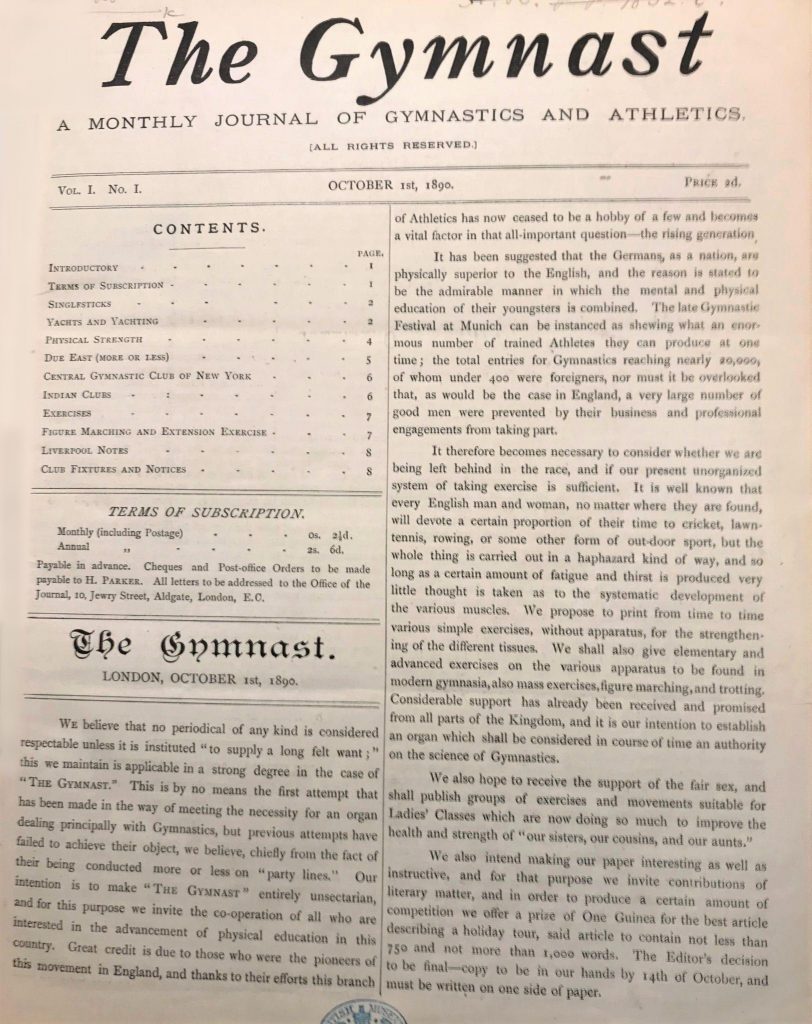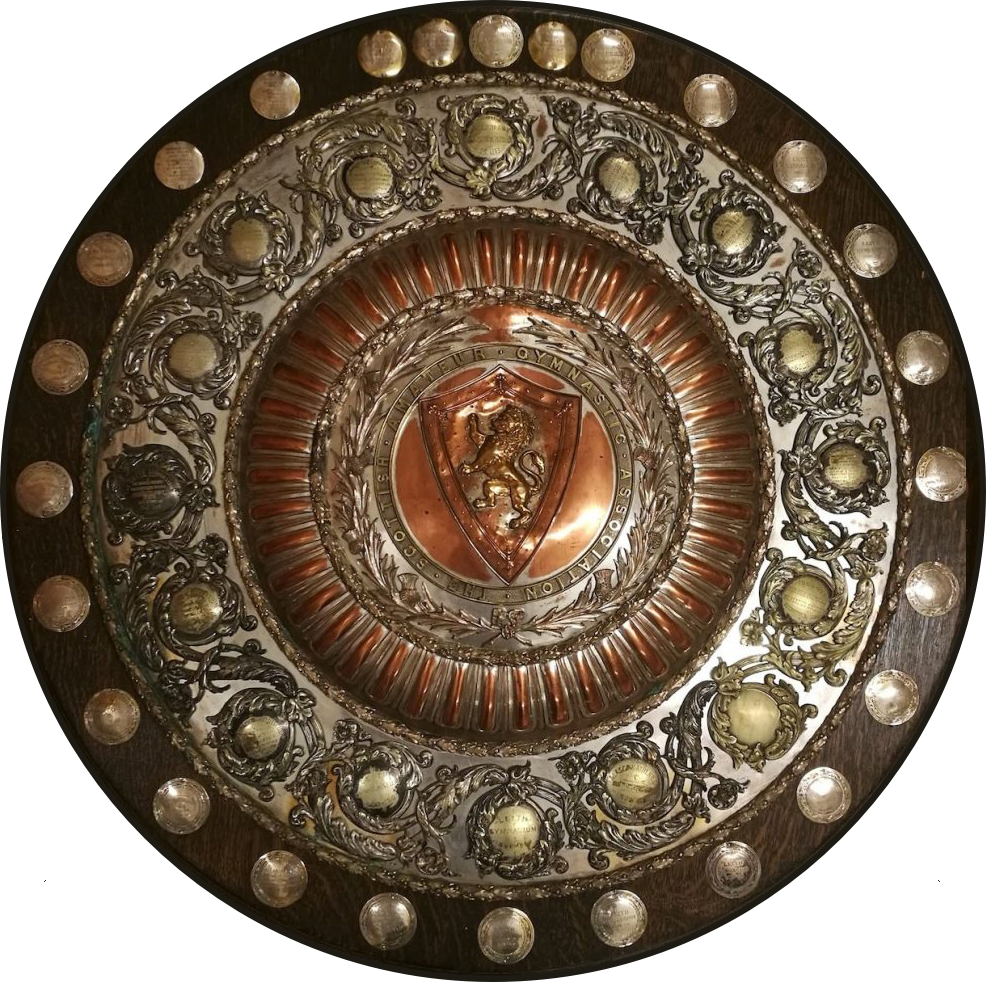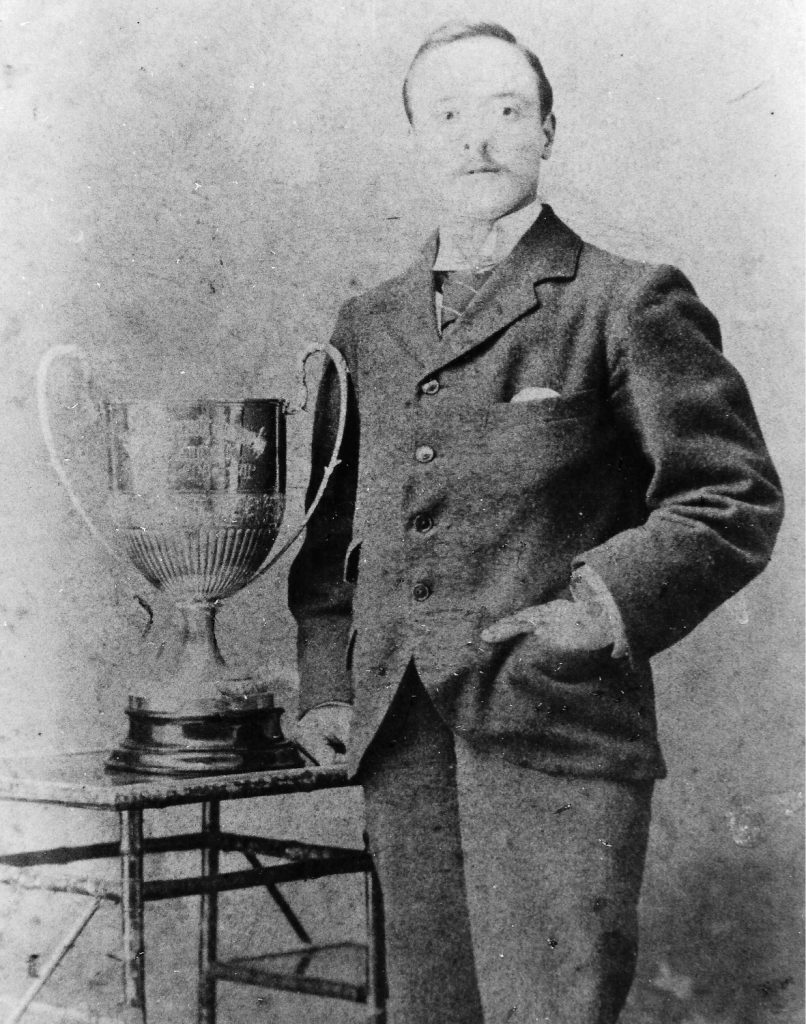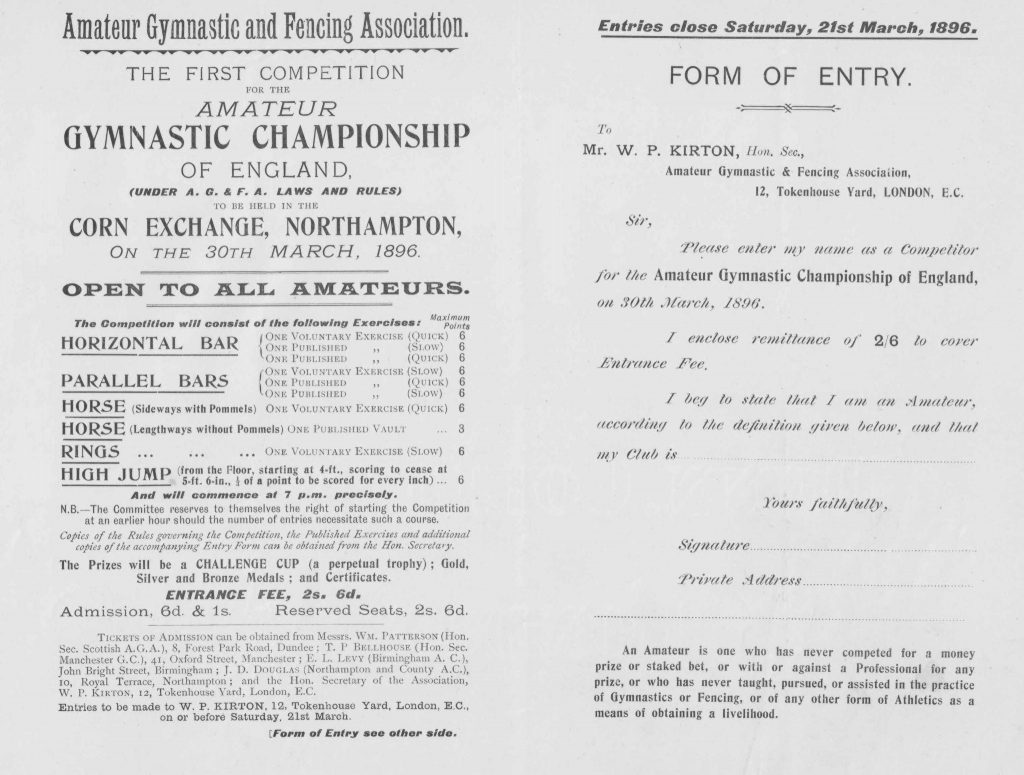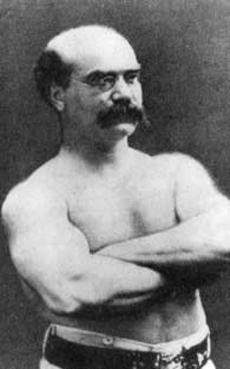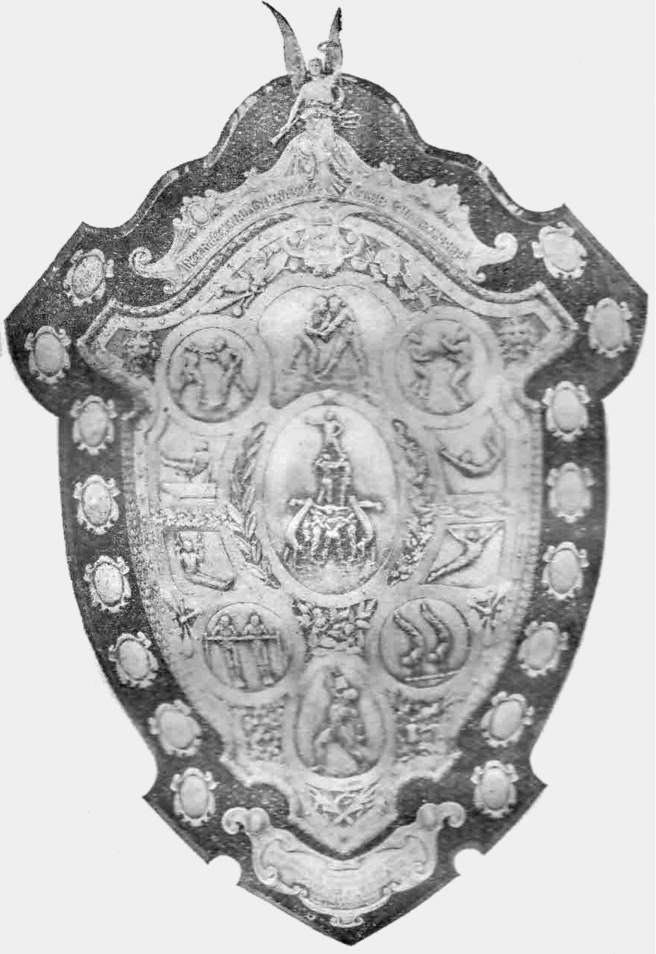HISTORY OF BRITISH GYMNASTICS
From 1825 onwards, gymnastics took place in Great Britain and from 1888, with the first meeting of the AGA, British male gymnasts stepped into national competition. These humble beginnings helped to forge the shape of what we now see as gymnastics.
Pre 1900
1838
Doctors De Betou and Ehrenhoof advocate gymnastics as physical medicine and set themselves up as ‘gymnastics practitioners’ in London.
1860
Archibald Maclaren, a pupil of European gymnastics, starts to teach gymnastics at the newly completed indoor gymnasium at Oxford. Twelve British soldiers are sent to Oxford University to learn the art of gymnastics, including the horizontal bar and parallel bars, under the direction of MacLaren. The twelve ‘apostles’ as they are known, were there to teach gymnastics to the army. Later, many army instructors found their way to the public schools where gymnastics became part of the curriculum. It was about this time that the Army Gymnastics Staff was established.
1861
The German Gymnastics Society is established in London
1863
The Northampton & County Amateur Athletics Club is formed. This is the oldest gymnastics club in Great Britain and is still operating at the time of writing in 2023.
1865
The German Gymnasium, the home of the German Gymnastics Society, opened in January 1865 at a cost of £6000.
1866
The first-ever National Olympian Games are held at the German Gymnasium at St Pancras. John Hulley, along with Dr William Penny Brrok and Ernest George Ravenstein were instrumental in setting up these games. Hulley’s plaque can be seen near Albert Dock Liverpool. The gymnasium hosted rope climb, fencing and other gymnastics for the Games.
The Birmingham Athletic Club, with a gymnastic group, is formed.
1880
The Birmingham Athletic Institute (B.A.I.) sent a team of men to the German Turnfest in Frankfurt on Main. They claim to have taught the German athletes the use of Indian clubs and the art of boxing.
1887
Austin Fleming Jenkin wins the German Gymnastics Society Championships, an open event considered at the time to be the National Championships, prior to the AGA Championships. He would win the championships again in 1888 and 1898.
1888
The Amateur Gymnastic Association is formed (this is an English Gymnastic Association). The inaugural meeting is held at the German Gymnasium. Four London clubs set up the meeting: the German Gymnastic Society, the Orion Gymnastic Society, St James Athletic Club and Stepney Gymnasium. We know that Northampton Athletic Club (still in existence) was invited to the meeting but know of no others. Not long after this founding of the association, some fencing clubs requested affiliation and persuaded the AGA to become the Amateur Gymnastic and Fencing Association.
Above – Letter to Northampton from the German Gymnastic Society from 1888.
1890
The Scottish Amateur Gymnastic Association is formed.
Austin Fleming Jenkin writes ‘Gymnastics’, a book that provides gymnastic terminology for the nation. This would prove to be a must-have for coaches until the 1930s. Jenkin must have had considerable influence in these times; he became President of the AGA from 1892 to 1903, and it is reported that thanks to Jenkin, the AGA Championships for men were inaugurated a few years later.
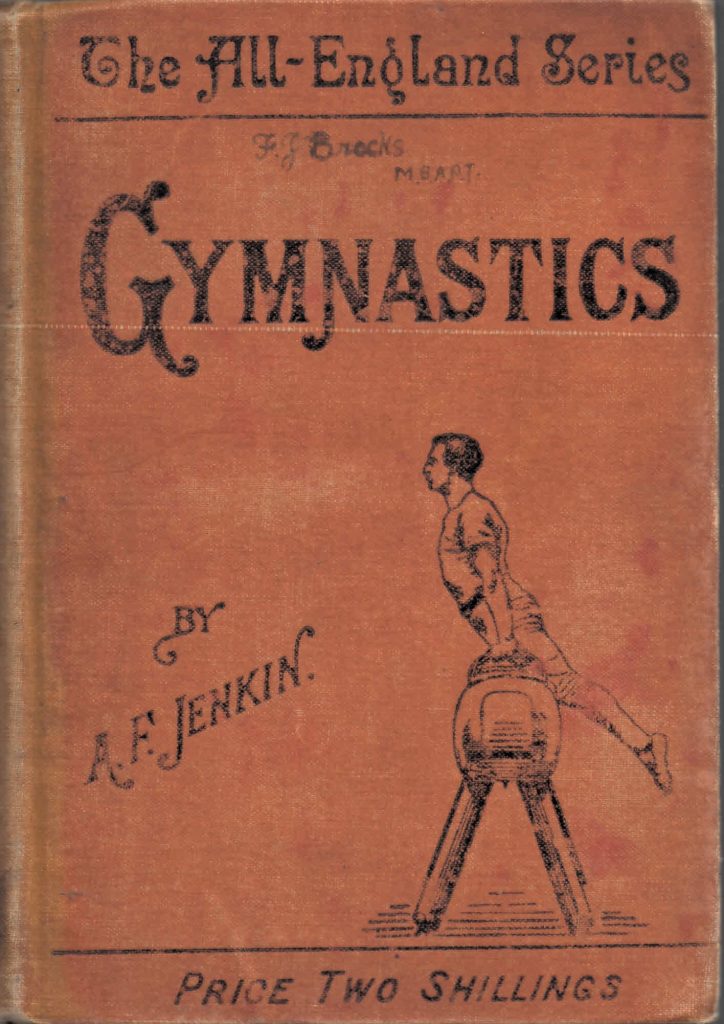
‘Gymnastics’ – book 1906 edition
The National Physical Recreation Society holds the first National Team Challenge Shield. This national gymnastic trophy is a first within the British Isles. The NPRS sends a message of supremacy to the AGA, thus creating a 10-year war between the two associations. The AGA had threatened to ban any gymnast participating in NPRS events so there is no mention of NPRS on this notice.
Above – poster for the first National Team Challenge Shield
The first edition of The Gymnast magazine is published in October. It is subtitled ‘A Monthly Journal for Gymnastics and Athletics’. By 1893, it was called The Gymnast and Athletic Review.
1892
The Birmingham Athletic Institute gymnasium on John Bright Street is opened.
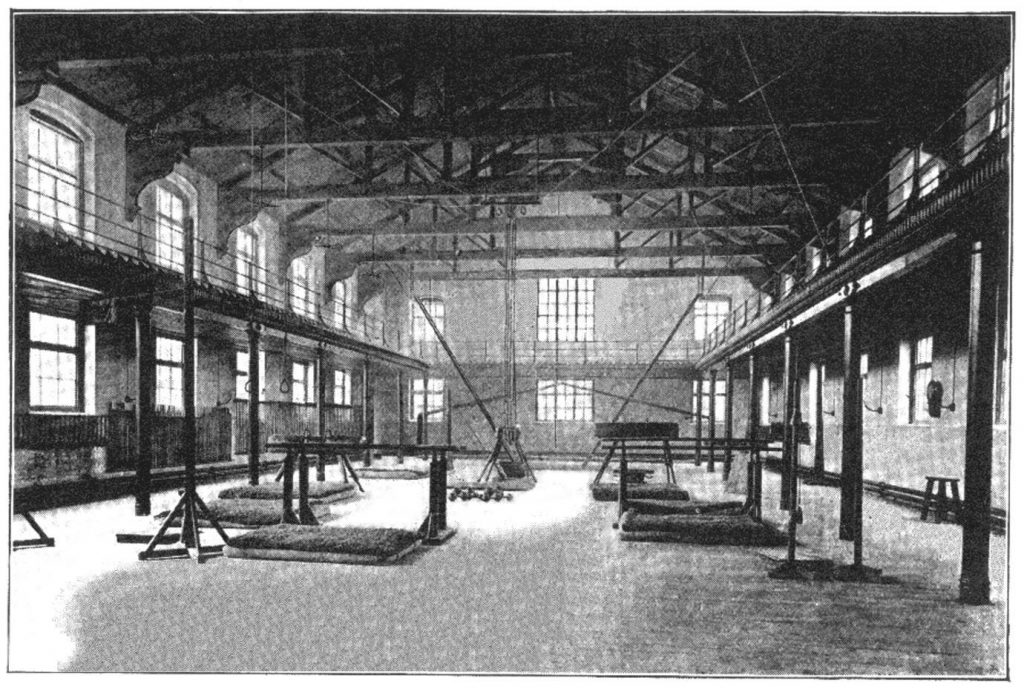
Above – The BAI gymnasium in John Bright Street in 1892
Frederick J Harvey’s London gymnastics team competes in the National Physical Recreation Society’s Challenge Shield. The London team comes 2nd to Aberdeen. A year later, Harvey represented England internationally. He is the director of the Exeter Hall Gymnasium in London and the author of numerous books on gymnastics. His great-grandson has a variety of his medals, one of which is a medal from the 1900 Expose Universal Paris, the Olympic Games. Were there other individual gymnastic events going on at the Paris Olympics?
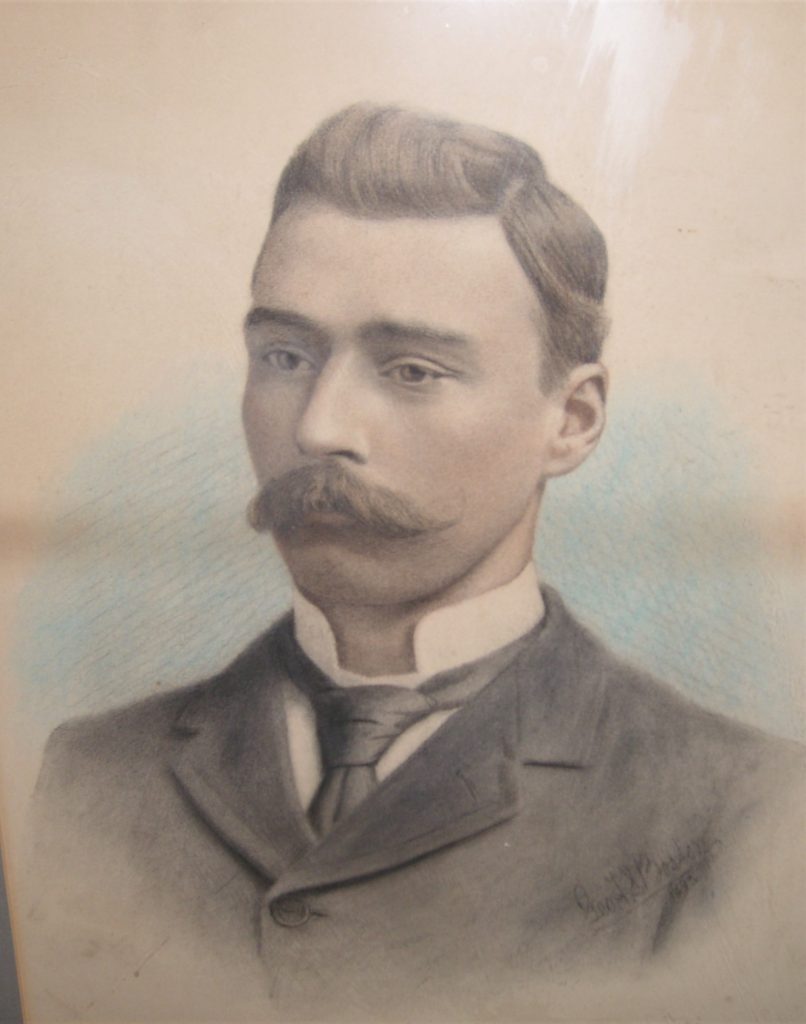
Above – A portrait of FJ Harvey
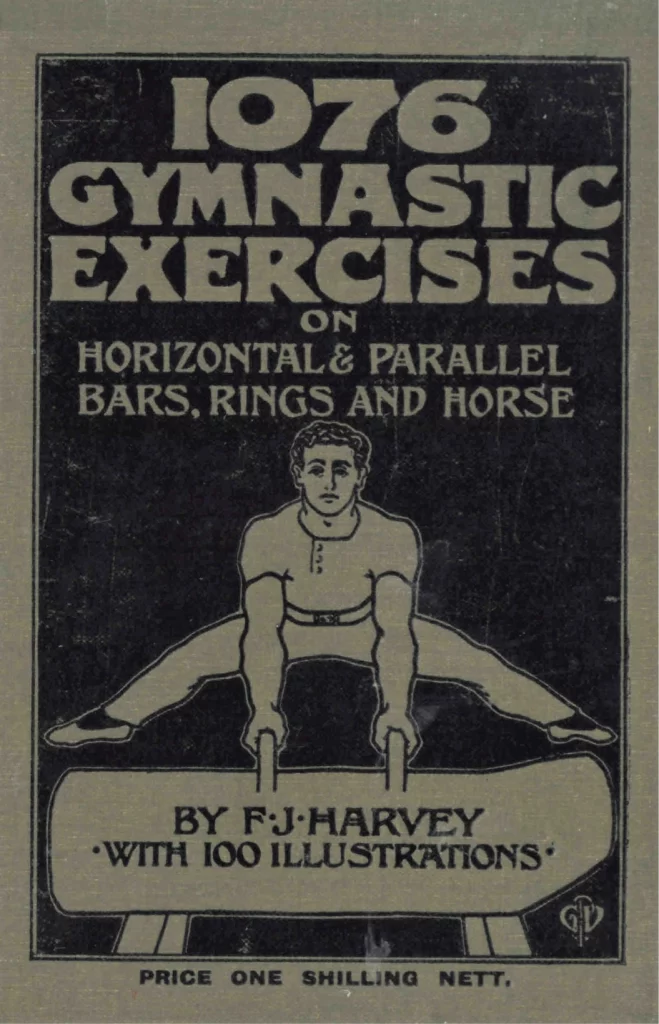
1903 copy of the FJ Harvey Horizontal and Parallel Bars, Rings and Horse Gymnastics Exercises book
1895
The Irish Amateur Gymnastics Association is formed in Dublin. National competitions take place. The city of Dublin GC wins the Irish Challenge Shield. The Ulster AGA holds its team championships with Montpottinger YMCA GC taking the title.
1896
The first English Championships for Men’s Gymnastics, Artistic, is held. The Championships is open to all amateurs; the prize, the Challenge Cup costing £28.15 shillings (about £16,300 in 2023’s money) is still the trophy for today’s Men’s Artitstic British championships. Mr TM Gardiner of Hoddesdon was commissioned to manufacture the apparatus for these championships. Henry Cain from the Orion Gym Club Bethnal Green is the winner.
CAIN Harry Leon in 1896
The 1st English Championships, announcement & entry form, organised by the Amateur Gymnastic and Fencing Association
1897
AGA headquarters move from London to Birmingham. Lawrence Levy is the new honorary secretary taking over from Londoner, Mr W P Kirton. Levy is well known at this time, he was the English weightlifting champion in 1891 and a member of the International Jury at the 1896 Olympic Games. In 1908, he goes on to become a member of the Council for the British Olympic Association while continuing his gymnastic positions and responsibilities. He wrote The Autobiography of an Athlete. It is in this life story that he records.
“Take, for instance, when we negotiated, or rather intended to negotiate the AGA individual Championships at Leeds. It was the Albert Hall, I think, a Hall of no very great capacity, but quite big enough to hold the numbers who turned up with the hope of witnessing the contest. Trouble came as soon as we began the Horizontal Bar. The first man who tried the long swings wrenched the supports out of the ground. The apparatus completely collapsed”.
The outcome was that the event was called off and planned for a later date in Birmingham.
Birmingham gives its first mass open-air display at Villa Park.
1898
Frederick J Harvey competes in the 9th Deutsch Turnfest held in Hamburg. He comes back with a medal which is still part of his family’s archive.
The Gymnast & Athletic Review Notice of the 3rd National Championships. At this time AGA is still the AG&FA as the advert in The Gymnast & Athletic Revue testifies. The medal shown also confirms the association with fencing. However some time later the liaison with fencing was dropped.
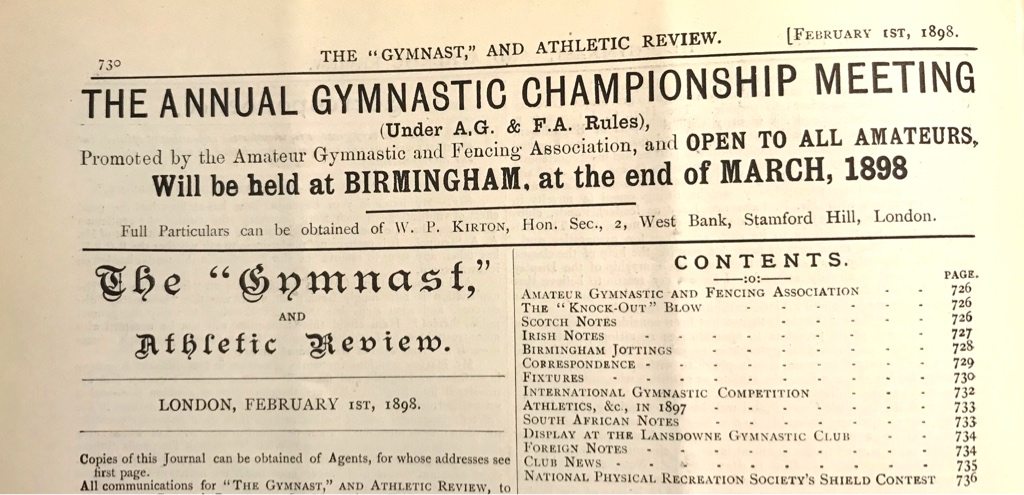 Above – The Gymnast & Athletic Review Notice of the 3rd National Championships
Above – The Gymnast & Athletic Review Notice of the 3rd National Championships
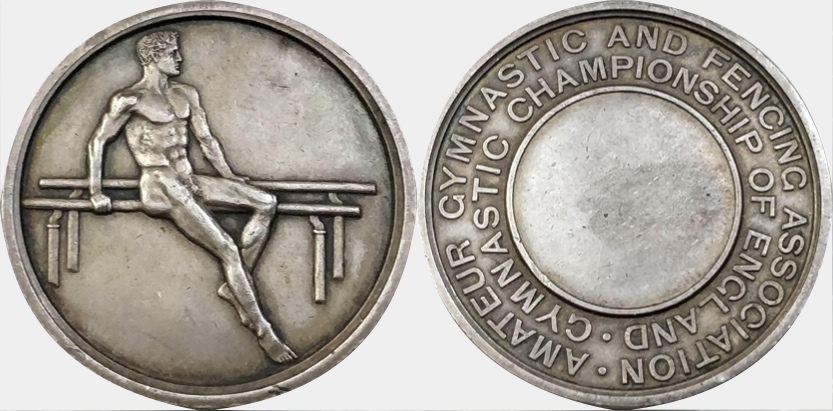 Above – 1898 AG & Fencing medal with permission from Stephen Mottershead
Above – 1898 AG & Fencing medal with permission from Stephen Mottershead
1899
The first British international is held in Dublin, with England, Scotland and Ireland competing under the auspices of the Amateur Gymnastic Federation. This event continued till at least 1911. Scotland goes on to win 6 times & England 6 times. Councillor Adams from Birmingham is at the event and donates a shield ready for the next year’s international. This becomes the Adams Shield, one of the most historic and coveted prizes in Artistic Gymnastics, still contested by British clubs today.
Pre 1900 | 1900 to 1939 | 1940 to 1980 | 1981 to present
The content on this site is curated by Meg Warren, with assistance from Warren Slingsby and a small but dedicated team of contributors. We are building a comprehensive history of gymnastics in Britain and are always interested in learning more and gathering more historical content, so if you can contribute to this page or any others, please get in touch with the links below. Read about the contributors.

Est. 2018 | © GymnasticsHistory.co.uk 2025

